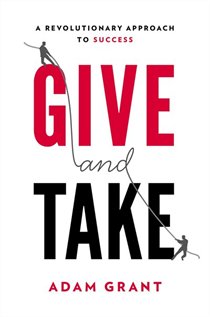The Blame Game and the Glut-ter Punks
Michael Gottwald, Carl Kriss & Josh Penn
The favorite thing to do on the internet amongst indie film journalists this week seems to be to tear apart Manohla Dargis' piece in the New York Times, "As Indies Explode, an Appeal for Sanity." We don't want to uselessly add to the cacophony, but rather it might benefit to consider the problem that Dargis poses from the perspective of grassroots distribution. And it is a real problem; however, the glut of films she bemoans at Sundance and then in New York theaters does not just manifest itself out of nowhere. It's simply a natural byproduct of the glut in production that there is generally right now. In fact in a recent survey of film professionals by Thom Powers, Janet Pierson mentions off hand that it seems like there are more people interested in making films than in walking to their local theater to see them. Basically, let's not pretend like the bottleneck is clogged up just at Sundance or New York theaters, and it's not that buyers are trigger-happy. Quite the opposite actually - every year Sundance programs more films and a smaller percentage acquire formal distribution (hence the increasing importance of exploring self-distribution through grassroots methods).
A directive like "take a moment and consider whether flooding theaters with titles is good for movies and moviegoers alike" assumes a couple things and overlooks some others. A simple raised hand might point out that this situation might only describe the situation amongst the traditional theater houses of New York or Los Angeles, dismissing what the spread of films is like in venues in every other city in America. But the easiest criticism has been to say that this statement neglects "four-walling" -- when a film's promoters buy out a theater in New York for the opening weekend. The next logical leap is to point the finger back at Ms. Dargis' own publication, because many use four-walling to exploit the Times' policy that they will review any film that opens theatrically in New York.
But let's look a little deeper. One thing we've often asserted in this fellowship that the glut of production makes branding, or curation -- anything that filters the massive choice that a viewer has to make when gazing upon this sea of films available -- more important and front and center to "distribution" than ever (and in fact distances it from the actual practice of distribution). For better or worse, a New York Times film review (due to their policy) is a form of that curation, precisely because it says "This film had a theatrical release." So the massive number of films available don't render that review less relevant; in fact it exacerbates its importance. And because it's essentially purchase-able via four-walling, it becomes an increasingly artificial symbol of success.
That is the real problem -- that the theatrical release is still being endowed with that (false symbolic) power. But the dynamics of self-release and grassroots distribution only add to it; a film's release in a New York theater is an event, and if grassroots campaigning depends on events to motivate action, a New York release is the equivalent of Election Day! However, if a film's calendar is peppered with events -- ie regional releases supported by the filmmaker doing a Q & A in person, selling merchandise, offering something special, like a candidate on a campaign trail -- then the importance of New York, as just one city, can be slightly diminished. A film's release should be a constant campaign with momentum consistently maintained around various benchmarks, not one long one that leads to a singular box office day and one write-up in the Times.
But what's most striking is the zero sum game that seems to be at play in Dargis' article between theaters and films (not to mention the false dichotomy of "good film = theater / bad film = VOD" that's assumed here). It's as if the number of theaters has stayed flat while the number of films we're trying to cram in them has skyrocketed. Probably the latter is outpacing the former, but the real opportunity for grassroots bottom-up disruption in the film industry might be located in the exhibition space. We've considered this in our idea for a Yelp-type app for film venues. If a filmmaker, after much deliberation, decides that a theatrical release is really important to their film's campaign (and not just a quick four-wall cash-grab for a review), then they have to open their mind to what kind of space their film can play in. Money that goes to four-walling traditional venues could instead go to promoting the actual run of their film in a less traditional space, or creating and building a real volunteer force to get word out based on that constant fuel of grassroots anything: sheer enthusiasm.
----
On behalf of Josh, Michael, and Carl, we just want to say it's been a great year writing about the film industry as it continues to change in unexpected and interesting ways. We're extremely grateful to John Tintori and everyone on the board at the Cinema Research Institute for the fellowship and the opportunity to think out loud in this corner of the internet for the last 12 months. And thank you to anyone who has tuned in, shared their thoughts, sent along articles, agreed to being interviewed. Grassroots filmmaking is all about community, and you all, along with the people that make CRI happen, are our community. Thank you.






